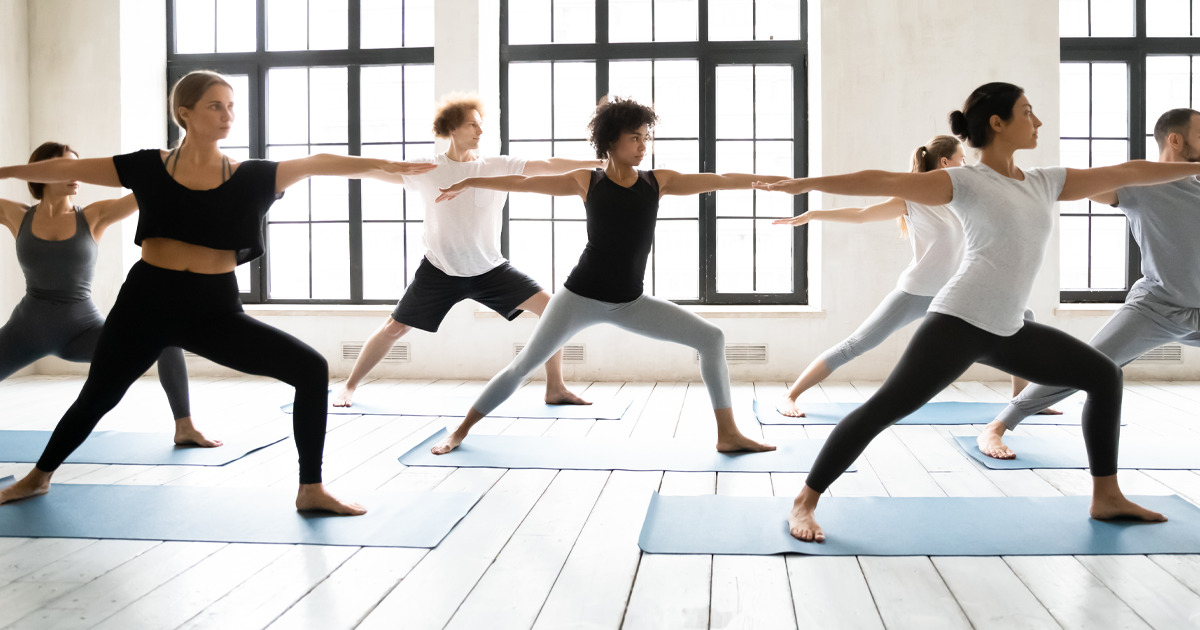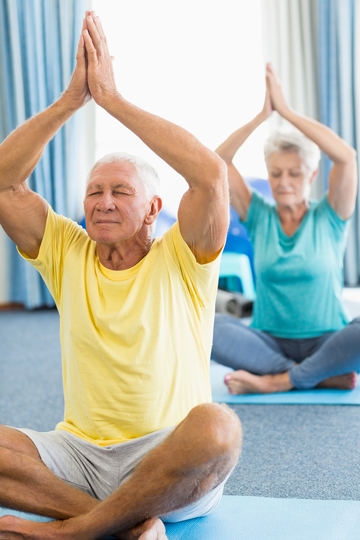
In today's fast-paced and demanding world, finding solace and peace can be a profound challenge. For individuals seeking relief from chronic pain, the combination of yoga and meditation has proven to be a powerful tool.
In this article, we explore the transformative effects of meditation on deepening your yoga practice, specifically for individuals experiencing chronic pain. By embracing silence and cultivating mindfulness, we unlock a pathway to inner strength, stress reduction, and mental resilience.
Join us on this journey as we uncover the seven ways meditation can enhance your yoga practice and bring freedom from pain.
Mindfulness Meditation
Mindfulness meditation is a daily practice that cultivates present-moment awareness, allowing individuals to consistently and consciously observe their thoughts, emotions, and sensations. By engaging in mindfulness techniques, such as focusing on the breath or body sensations, individuals can develop a greater sense of clarity and calmness in their lives.
The benefits of mindfulness meditation are numerous. Research has shown that it can reduce stress, anxiety, and depression, while also improving attention, focus, and overall well-being. This practice encourages a non-judgmental attitude towards one's experiences, allowing individuals to observe their thoughts and emotions without getting caught up in them.
Guided Visualization
Guided visualization is a powerful tool that can enhance inner awareness and deepen the mind-body connection in yoga practice for individuals experiencing chronic pain.
Through the use of specific imagery and visualization techniques, guided visualization can help individuals tap into their subconscious mind, allowing them to access deep levels of relaxation and healing.

Enhancing Inner Awareness
By incorporating guided visualization techniques, practitioners can deepen their inner awareness and enhance the transformative power of their yoga practice for chronic pain relief. Guided visualization is a powerful tool that allows individuals to create vivid mental images, helping them improve focus and increase self-awareness.
Here are three ways in which guided visualization can enhance inner awareness during yoga practice:
- Heightened Sensory Perception: Through guided visualization, practitioners can tap into their senses and experience a heightened awareness of their body, breath, and surroundings. This deepened sensory perception allows for a more immersive and mindful yoga practice.
- Emotional Exploration: Guided visualization provides a safe space for individuals to explore and process their emotions. It allows practitioners to delve into their inner world, uncovering and addressing any emotional blockages that may contribute to chronic pain.
- Connection to Inner Wisdom: By guiding the mind inward, guided visualization helps practitioners connect with their inner wisdom and intuition. This connection enables individuals to make conscious choices that support their healing journey and overall well-being.
Incorporating guided visualization into a yoga practice can greatly enhance inner awareness, empowering individuals to find freedom from chronic pain and cultivate a deeper sense of self.
Deepening Mind-Body Connection
Incorporating a structured approach to visualization can significantly deepen the mind-body connection during yoga practice for chronic pain relief. Guided visualization is a powerful tool that allows individuals to tap into their inner resources and harness the healing power of their imagination. By creating vivid mental images and engaging all the senses, guided visualization can enhance emotional healing and promote spiritual growth.
During a yoga practice for chronic pain, guided visualization can help individuals connect with their bodies on a deeper level. By envisioning a pain-free body or visualizing the release of tension and discomfort, practitioners can cultivate a sense of empowerment and resilience. This practice not only helps to alleviate physical pain but also addresses the emotional toll that chronic pain can take.
Furthermore, guided visualization can support spiritual growth by providing a space for introspection and self-reflection. It allows individuals to access their inner wisdom and intuition, leading to a greater understanding of themselves and their place in the world. By incorporating guided visualization into their yoga practice, individuals can deepen their mind-body connection, promote emotional healing, and facilitate spiritual growth.
Body Scan Meditation
One effective technique for deepening your yoga practice and managing chronic pain is body scan meditation. This practice involves systematically scanning your body with your awareness, bringing attention to each area and observing any sensations that arise. Body scan meditation can be incredibly beneficial for those experiencing chronic pain as it cultivates sensory awareness and activates the body's relaxation response.

Here are three ways body scan meditation can enhance your yoga practice and alleviate chronic pain:
- Increased sensory awareness: By intentionally directing your attention to different parts of your body, you develop a heightened sense of awareness, allowing you to notice subtle sensations that you may have previously overlooked.
- Deep relaxation: The body scan meditation activates the relaxation response, promoting a state of deep relaxation and reducing the impact of chronic pain on your physical and mental well-being.
- Mind-body connection: Through regular practice, body scan meditation strengthens the mind-body connection, helping you to better understand how your thoughts and emotions impact your physical sensations, and vice versa.
Breath Awareness
Breath awareness is a fundamental practice in deepening your yoga practice and managing chronic pain. By focusing on the breath, you cultivate a connection between the body and mind, allowing you to tap into the present moment and find relief from pain. Breath control, also known as pranayama techniques, can help regulate the nervous system, reduce stress, and promote relaxation.
Incorporating breath awareness into your yoga practice allows you to become more attuned to your body's needs. By observing the breath, you can identify areas of tension or discomfort and consciously release them. This mindful approach to breathing can help you navigate through physical challenges with ease and grace.
Pranayama techniques, such as deep belly breathing or alternate nostril breathing, can further enhance the benefits of breath awareness. These techniques can help balance the energy in the body, increase vitality, and promote a sense of calm and clarity.
Through breath awareness and pranayama, you can unlock the power of silence within yourself, finding freedom from chronic pain and experiencing a deepened connection with your yoga practice.
Pain Acceptance
Pain acceptance is a crucial aspect of managing chronic pain through meditation and yoga. It involves embracing physical discomfort and cultivating inner resilience.
Embracing Physical Discomfort
The practice of embracing physical discomfort and accepting pain is essential for deepening your yoga practice and finding relief from chronic pain. While it may seem counterintuitive, embracing physical discomfort can actually lead to a greater sense of strength and freedom in your body.

Here are three ways in which embracing physical discomfort can help you overcome challenges and find inner resilience:
- Mindful awareness: By staying present with the sensations of discomfort in your body, you cultivate a deep sense of awareness. This awareness allows you to understand the root causes of your pain and make conscious choices to address them.
- Building resilience: Embracing physical discomfort teaches you to stay calm and centered even in the face of challenging sensations. This resilience extends beyond your yoga practice and can help you navigate difficult situations in your daily life.
- Cultivating compassion: When you embrace physical discomfort, you develop a greater sense of compassion for yourself. You learn to listen to your body's needs and respond with kindness and self-care.
Cultivating Inner Resilience
Continuing the discussion from the previous subtopic, consistently embracing physical discomfort can cultivate inner resilience and enhance pain acceptance during your yoga practice.
Cultivating inner resilience involves developing a sense of inner strength and emotional balance that allows you to navigate through challenging situations, including chronic pain. By accepting and acknowledging the presence of pain, you can tap into your inner strength and build resilience.
This process involves accepting pain as an integral part of your experience, rather than resisting or trying to escape it. Through regular meditation and mindfulness practices, you can learn to observe and accept your pain without judgment or attachment, fostering emotional balance and cultivating a deeper connection with yourself.
This newfound resilience can empower you to face the challenges of your yoga practice and chronic pain with grace and equanimity, ultimately leading to a greater sense of freedom and well-being.
Stress Reduction
Regularly practicing meditation can significantly reduce stress levels and enhance the effectiveness of your yoga practice for managing chronic pain. Stress is a common trigger for many chronic pain conditions, and learning to manage it is crucial for finding relief.
Here are three ways meditation can help reduce stress and enhance your yoga practice:

- Stress management: Meditation helps you develop a greater awareness of your thoughts and emotions, allowing you to identify and manage stress triggers more effectively.
- Relaxation techniques: Meditation techniques such as deep breathing and progressive muscle relaxation promote relaxation and release tension in the body, helping to reduce stress levels.
- Mind-body connection: Meditation cultivates a deeper connection between your mind and body, enabling you to better understand how stress affects your physical sensations and overall well-being.
Mental Resilience
Mental resilience plays a crucial role in enhancing the effectiveness of meditation and yoga practices for managing chronic pain. Building strength in our minds is just as important as building strength in our bodies.
When faced with chronic pain, it is easy to become overwhelmed by negative emotions and feelings of helplessness. However, by cultivating mental resilience through meditation and yoga, we can develop the ability to bounce back from adversity and maintain emotional well-being.
These practices teach us to observe our thoughts and emotions without judgment, allowing us to develop a more compassionate and accepting attitude towards ourselves and our pain. By building mental resilience, we can better cope with the challenges that chronic pain presents, leading to enhanced overall well-being and a greater sense of freedom.
Frequently Asked Questions
How Long Should a Mindfulness Meditation Session Be to Experience Its Benefits for Chronic Pain?
The duration of a mindfulness meditation session to experience benefits for chronic pain may vary. It is recommended to start with shorter sessions and gradually increase the time as tolerance develops.
Can Guided Visualization Be Helpful for Managing Chronic Pain in Specific Areas of the Body?
Visualization techniques can be helpful in managing chronic pain in specific areas of the body. By harnessing the power of the mind-body connection, guided visualization allows individuals to focus their attention and potentially alleviate pain through imagery and relaxation.
Is Body Scan Meditation Suitable for All Individuals, Regardless of Their Physical Limitations or Mobility Issues?
Body scan meditation is a valuable practice for individuals with physical limitations or mobility issues. It allows for a deep connection with the body, promoting self-awareness and acceptance, regardless of one's physical abilities.
How Can Breath Awareness Techniques Be Incorporated Into a Yoga Practice for Chronic Pain Management?
Breath control techniques can be seamlessly integrated into a yoga practice for chronic pain management. By focusing on the breath, individuals can deepen their mind-body connection, enhance relaxation, and cultivate a sense of freedom from pain.

Can Practicing Pain Acceptance Through Meditation Help Individuals Reduce Their Reliance on Pain Medication for Chronic Pain?
Practicing pain acceptance through meditation can potentially reduce reliance on pain medication for chronic pain. Mindfulness techniques and alternative therapies offer individuals a holistic approach to pain management, fostering a sense of freedom and empowerment.
 Business & FinanceHealth & MedicineTechnologyLifestyle & CultureScience & EnvironmentWorld NewsPrivacy PolicyTerms And Conditions
Business & FinanceHealth & MedicineTechnologyLifestyle & CultureScience & EnvironmentWorld NewsPrivacy PolicyTerms And Conditions
